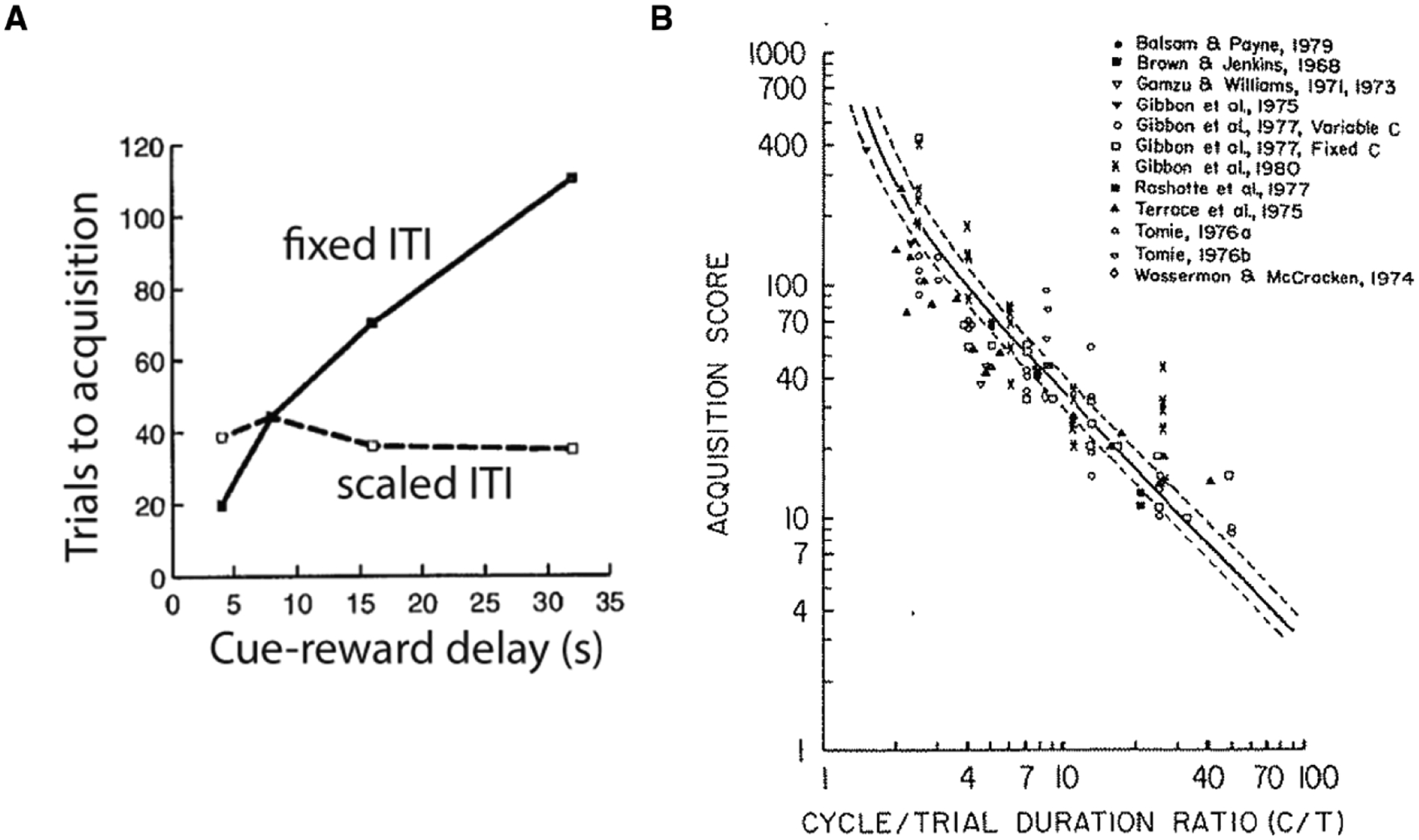Fig 3.

Timescale-invariance of behavioral learning. A. Reproduced from Gallistel and Gibbon, 2000. When the cue-reward delay is increased, the number of trials to acquisition increases only when the ITI is fixed. When the ITI is correspondingly scaled, the number of trials to acquisition remains largely constant. B. Reproduced from a meta-analysis published in Balsam et al. 1981. When the ratio between outcome-outcome delay (called cycle duration) and cue-outcome duration (called trial duration) is changed, the number of trials to acquisition varies in a predictable manner.
